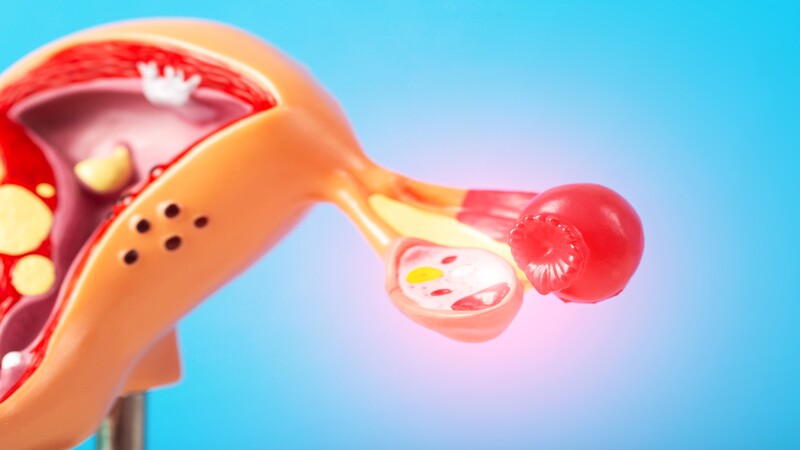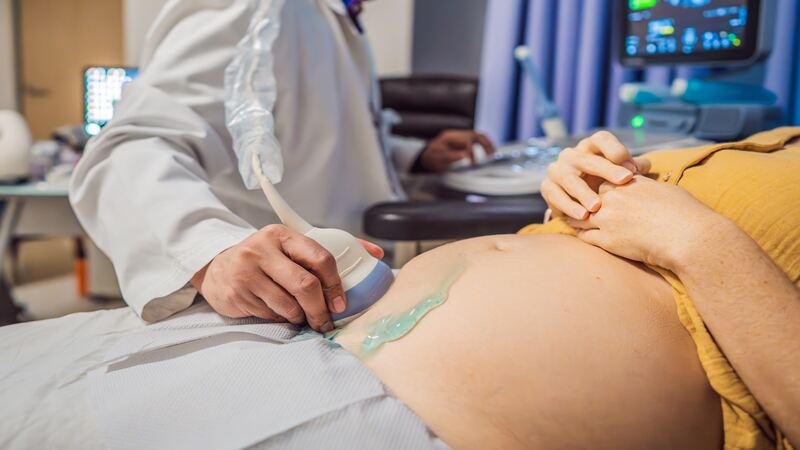 While seeing the female reproductive system diagram, you would have come across two tube-like curves extending from either upper end of the uterus. They are called the Fallopian tubes which connect the uterus to the ovaries. Apart from carrying the eggs from the ovaries to the uterus every month, you would be amazed to know that conception also happens in the wonderful fallopian tubes.
While seeing the female reproductive system diagram, you would have come across two tube-like curves extending from either upper end of the uterus. They are called the Fallopian tubes which connect the uterus to the ovaries. Apart from carrying the eggs from the ovaries to the uterus every month, you would be amazed to know that conception also happens in the wonderful fallopian tubes.
Sometimes there can be issues in the fallopian tubes. The formation of Fallopian tube cysts is one such possibility. Read along more to find out about these cysts and how they can affect pregnancy, the causes, symptoms, and possible management.
What is a Fallopian Tube Cyst?
A fallopian tube cyst or a para-ovarian cyst is a fluid-filled sac located on or around the fallopian tube [1]. These cysts are typically quite small, varying in size from 1-8 cm [2]. Occasionally, they can grow more than 10 cm [3]. Most of the time, these cysts are benign and do not cause much trouble. Usually, these cysts resolve on their own, and very few of the symptomatic ones require treatment.
What Causes A Fallopian Tube Cyst?

During embryonic development, all babies, whether male or female, have a Wolffian duct. In males, this duct remains and gives rise to the male genital organs, and in females, this duct shrinks away [4]. In some female babies, some parts of this duct can remain remnant, giving rise to fallopian tube cysts in the future. Sometimes, part of the Mullerian duct (which grows into female genital organs) remains a remnant leading to formation of these cysts. A few other causes of these fallopian tube cysts are as follows:
-
- Infections: Sometimes, Pelvic Inflammatory Disease can lead to inflammation and fluid accumulation in and around the fallopian tubes [5]. This can give rise to cysts.
- Endometriosis: In this condition, the endometrial tissue, which normally lines the uterus, starts growing at abnormal places. If it grows inside the fallopian tube, then it can lead to formation of a cyst.
-
- Hydrosalpinx: Sometimes, there is a blockage in the fallopian tube due to infections or pelvic surgeries. This can result in a fluid-filled cyst.
- Post-surgery: In a few cases where there has been a pelvic surgery or any intervention around the fallopian tubes, this can lead to the formation of cysts.
Symptoms of Fallopian Tube Cysts
Most of the time, these cysts remain asymptomatic and are detected incidentally. A very few of these cysts can cause the following symptoms:
- Pelvic pain or abdominal discomfort is a common symptom. The pain is usually intermittent.
- Abnormal menstrual bleeding is a less common symptom. The periods can become irregular or there can be abnormal spotting between cycles.
- Pressure symptoms on nearby organs, if the size of the cyst is large.
- Swelling in the abdomen is a rare symptom that happens if the size of the cyst becomes too big.
- Acute pain and vomiting in case of torsion [6].
How Is Fallopian Tube Cyst During Pregnancy Detected?
 Usually, fallopian tube cysts are an incidental finding during pregnancy scans. This can be concerning for a few mothers, but it can be managed conservatively with frequent monitoring.
Usually, fallopian tube cysts are an incidental finding during pregnancy scans. This can be concerning for a few mothers, but it can be managed conservatively with frequent monitoring.
Once it is detected, you might need regular monitoring of the size of the cyst. Any sudden increase in the size requires effective management. Sometimes, there can be pain or pressure symptoms associated with the cyst, which will require medical management. There can be a few complications that can potentially arise during pregnancy. They are:
Rupture: There can be a rupture of the cyst during pregnancy, leading to severe abdominal pain and urgent management.
Torsion: This is a serious complication where the cyst twists around along with the fallopian tube. This condition is common during pregnancy as there is faster growth.
How Is Fallopian Tube Cyst Treated?
Most of the asymptomatic fallopian tube cysts resolve on their own. In cases of large cysts, or faster-growing cysts there can be a possibility of complications. This requires effective management, as follows:
Observation
Most of the asymptomatic cysts do not require any intervention. But, they do require watchful monitoring through regular ultrasound examinations.
Medical Management
In case of any infection or inflammation complicating the cyst, your doctor can put you on antibiotics to treat the underlying infection.
Surgical Management
If the cyst does not resolve on its own, or it continues to grow in size and remain symptomatic, then it is best to go for surgical treatment. There are two options available:
Laparoscopy
The cyst removal takes place through a very small incision with the help of a camera [8]. This is the best option and gives a quicker recovery.
Laparotomy
It is an invasive surgery requiring a larger incision. Mostly done in case of complications or if the cyst is too large and complex.
So, if you incidentally happen to find out about a Fallopian tube cyst during pregnancy, then there is no need to panic. Stay calm, as most of the cysts are harmless for you and the baby and are easy to manage. Regular monitoring of these cysts is the most important thing to do. If your symptoms worsen, then do not hesitate to talk to your healthcare provider for the best management option.
FAQ’s
1. Is Cyst Harmful During Pregnancy?
Most of the time, fallopian tube cysts remain harmless during pregnancy. In rare cases, there can be a possibility of complications like torsion or rupture of the cyst, requiring urgent attention.
2. Is It Normal To Have Cysts In Fallopian Tubes?
The presence of fallopian tube cysts is not very common. They are usually benign and are caught incidentally. Presence of a fallopian tube cyst requires watchful monitoring to avoid the risk of any potential complication.
3. Can An Ovarian Cyst During Pregnancy Cause Miscarriage?
An ovarian cyst detection during pregnancy usually does not cause any harm to the growing fetus. In case of cyst rupture or torsion, there can be internal bleeding, leading to pregnancy complications and risk to the baby.
4. How Can I Manage Ovarian Cyst With Pregnancy?
An ovarian cyst with pregnancy requires regular monitoring using ultrasound, to watch for any abnormal increase in size and complications. In case of any abnormal pain or bleeding, it is best to get it excised using laparoscopic surgery.
References
- ISUOG, Para-ovarian Cysts – https://www.isuog.org/clinical-resources/patient-information-series/patient-information-gynecological-conditions/para-ovarian-cysts.html
- Sally Perlman, Paige Hertweck, Mary E. Fallat,Paratubal and tubal abnormalities,Seminars in Pediatric Surgery – https://www.sciencedirect.com/science/article/abs/pii/S1055858605000156
- Fatema, Nishat & Al Badi, Muna. (2018). A Postmenopausal Woman with Giant Ovarian Serous Cyst Adenoma: A Case Report with Brief Literature Review. Case Reports in Obstetrics and Gynecology. 2018. – https://www.researchgate.net/publication/324221671
- Sabine E. Hannema, Ieuan A. Hughes; Regulation of Wolffian Duct Development. Hormone Research 1 March 2007 – https://karger.com/hrp/article/67/3/142/372954/Regulation-of-Wolffian-Duct-Development
- BetterHealth Channel, Salpingitis – https://www.betterhealth.vic.gov.au/health/conditionsandtreatments/salpingitis
- Harmon, J.C., Binkovitz, L.A. & Binkovitz, L.E. Isolated fallopian tube torsion: sonographic and CT features. Pediatr Radiol 38, 175–179 (2008) – https://link.springer.com/article/10.1007/s00247-007-0683-y
- Durairaj A, Gandhiraman K. Complications and Management of Paraovarian Cyst: A Retrospective Analysis. J Obstet Gynaecol India. 2019 Apr – https://www.ncbi.nlm.nih.gov/pmc/articles/PMC6430268/
